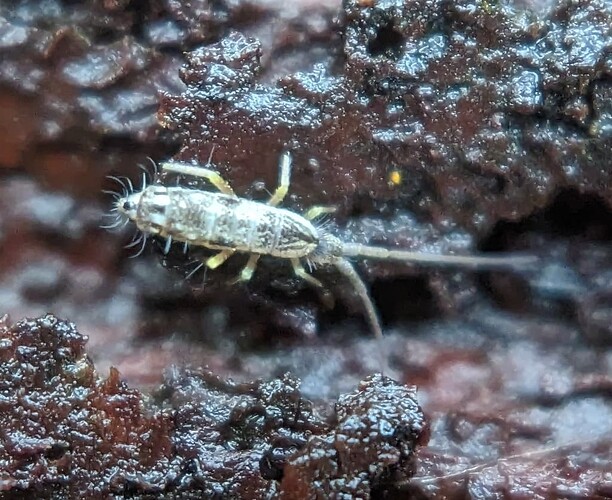Well, it’s kinda specific to gear and I have minimal gear.
For the quickest, handiest (pull out of pant pocket and shoot) way I use my Olympus Tg-5 Stacking microscope mode. There are two options on the TG for stacking: in-camera processing, or capture images for stacking later on your computer. Since I primarily use my TG as an ‘opportunistic’ camera (carry it with me whenever I can’t carry anything bigger), I almost always end up using the in-camera mode.
It’s dead easy to use (point and shoot) but like all stack shooting, it doesn’t work very well on moving subjects. And even standing or sitting, many animals twitch SOME part of their body (antenna, mandibles, etc.). That’s maybe where I’ll switch to stack capturing where I can get more control stacking outside of the camera for more control and correction of movements and other stuff.
I started using Photoshop for stacking and in its favour, it does a pretty decent job at aligning shots that may be slightly different scales and angles. But it’s god-awful slow compared to just about any other package. Why Adobe (the king of image processing) can’t improve this, I don’t understand.
When I went looking for quicker alternatives I tried out all kinds of stacking software trials. My feeling is that many if not most of the packages were designed really for gear that I didn’t own or use like computer controlled stacking rails or cameras with easy/quick file transfer connections. Then I found Affinity Photo.
This one is kinda ‘stacking for the rest of us’ in that it is incredibly easy to use, very fast, and limited in controls and tools. It’s also (and this is important to me) the most tolerant and forgiving of all the apps I tested for auto-aligning images taken by handheld shooting. That’s why it’s now my main goto for most externally stacked jobs. They have a 30 day trial if you want to check it out.
The focus stacking in Affinity is, like Photoshop, really a menu item in the main photo-editing program. It asks you to select and add files, then you click OK and a few seconds later it starts to actively stack and the results build in front of your eyes in seconds. Then you go back in with a simple touch up tool to replace any lower focus areas in the result with better focused areas contained in any of the stacked images. That’s about it!
Because I shoot mostly with a Nikon P950 bridge camera, I use 4K video for the majority of my high macro shots because – it provides lots of focus results in the frame choosing afterwards, and also – you can use the video recording capture to ‘scan’ the focus of a subject and select frames from the result later to stack. It works pretty well! Here’s a couple stacked images from today and one from two days ago to demo what I’m getting.
All shot with available natural light, handheld, as 4k vid clips. At home I selected the best focus stacking frames and used Affinity Photo to do the stacking, then finished tweaking the exports from Affinity in my Photoshop setup.









